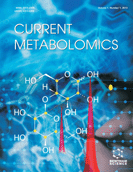Abstract
Linear Ion Mobility Spectrometry (IMS) is a vanguard analytical technique for the determination of volatile and semi-volatile compounds, thanks to the gas-phase separation of the different ions under a weak electric field at atmospheric pressure. The ions migrate through a drift tube with defined length. Monitoring of the ion current reveals the ion drift time. The drift time correlates to the specific ion-mobility, a function of the ion mass, charge and collision cross section with the ambient gas.
In this article, IMS, a technology initially developed for detecting traces of explosive and narcotic residues, as well as chemical warfare agents will be presented to meet the special requirements of metabolomics analysis. With the right sampling approach, IMS enables the detection of a wide number of compounds from different chemistry families, including alcohols, aldehydes, aromatics, amines, esters and ketones, among others, even from most complicated and problematic matrices. The selectivity of IMS can be improved by coupling to Gas Chromatography or Mass Spectrometry in order to improve separation or detection of analytes respectively. Other types of IMS such as, Travelling Wave IMS (TWIMS) and High Field Asymmetric Waveform IMS (FAIMS) have also enhanced the analytical possibilities of this technique.
Keywords: Ion mobility spectrometry, volatile, and semi-volatile compounds, foodomics.
 40
40


















